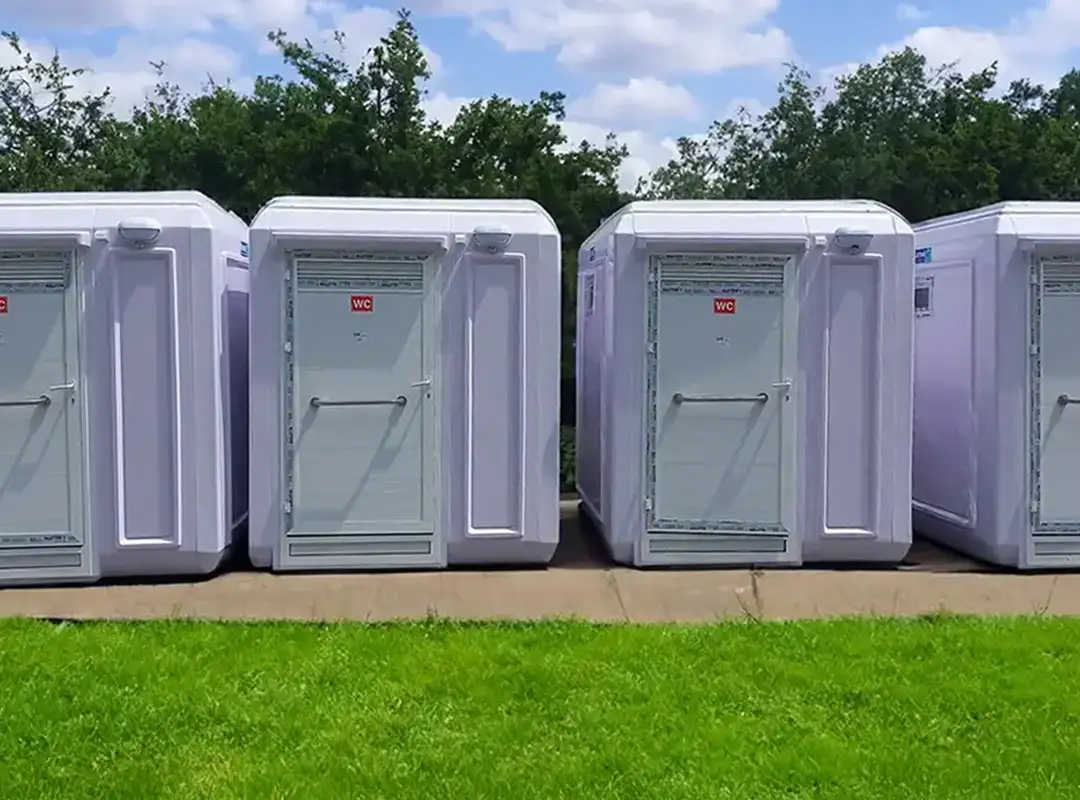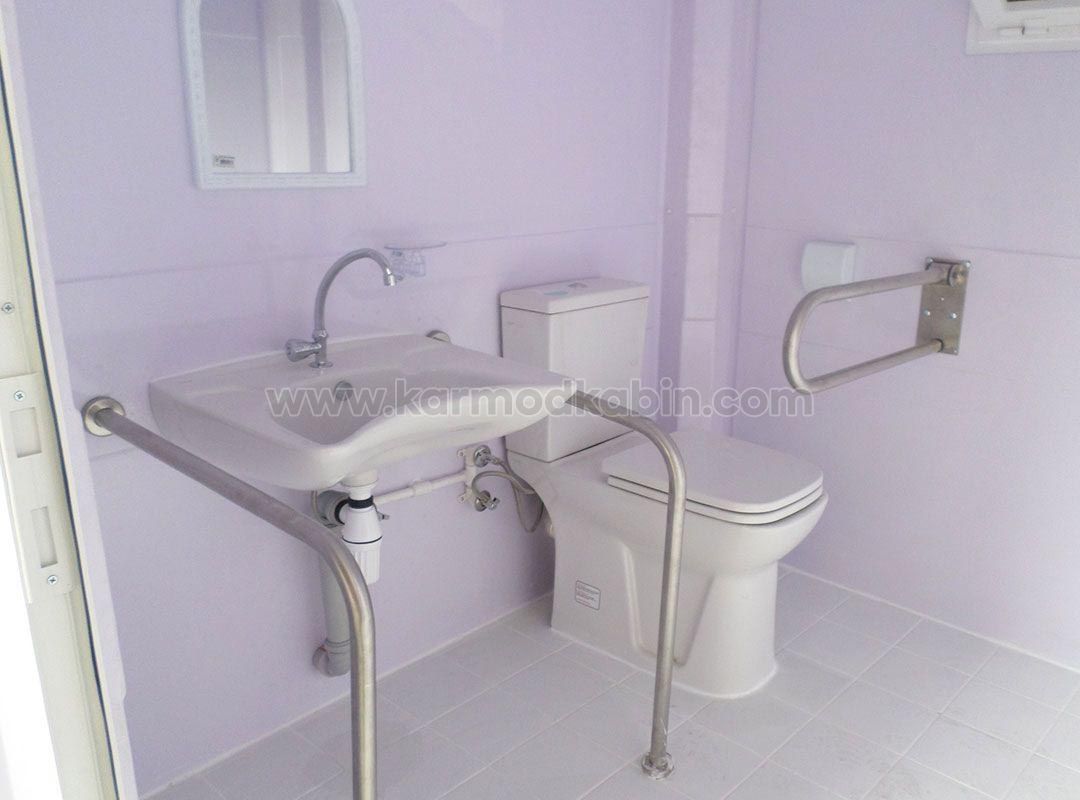
Providing accessible restroom solutions is more than just meeting regulations—it’s about creating inclusive environments where everyone feels comfortable and respected. ADA-compliant portable toilets are specifically designed to ensure that individuals with disabilities have safe, dignified, and convenient restroom access, whether at a large public event, a busy construction site, or a community gathering. This not only enhances user experience but also reflects positively on your organization’s commitment to accessibility and inclusivity.
The growing demand for ADA-compliant portable toilets highlights a shift toward higher standards in both design and functionality. With features like spacious interiors, secure handrails, and ground-level entry, these units are tailored to meet legal requirements while providing superior comfort. For businesses, event organizers, and contractors, investing in ADA-compliant solutions is not just about following the law—it’s about setting a standard of care, building trust, and ensuring every guest or worker feels valued.
Accessibility plays a vital role in how people perceive your event, project, or business. When you provide ADA-compliant portable toilets, you are sending a strong message: everyone is welcome, regardless of physical ability. This simple choice builds trust with your audience, improves satisfaction, and helps you avoid negative feedback from guests or workers who may otherwise feel overlooked.
From a business perspective, ADA compliance isn’t just about following the law—it’s a way to safeguard your reputation and reduce risks. Lawsuits, penalties, or public criticism can be costly, both financially and in terms of brand image. By proactively offering ADA-compliant portable toilets, you demonstrate responsibility and forward-thinking, positioning your company as a reliable and customer-focused provider.
The Americans with Disabilities Act (ADA) sets clear guidelines to ensure accessibility in all public facilities, including portable toilets. According to these standards, portable restrooms must offer features such as wider doorways, spacious interiors for wheelchair maneuvering, slip-resistant flooring, and secure handrails. These requirements are not optional—they are mandatory for events, businesses, and construction sites that want to remain compliant with federal regulations.
Understanding the legal framework helps you make informed purchasing decisions. When you choose ADA-compliant portable toilets, you’re not only avoiding costly fines or legal disputes but also ensuring that your operations align with the highest accessibility standards. For businesses and event organizers, compliance is a way to build credibility while showing respect and care for all users. This dual benefit—legal protection and brand trust—makes ADA compliance an essential part of any restroom planning strategy.
ADA-compliant portable toilets are carefully engineered to provide both functionality and comfort. One of the most important features is the spacious interior, which allows wheelchair users to turn and maneuver with ease. Wide doorways, ground-level or ramped entry, and easy-to-use door handles ensure that entry and exit are safe and convenient for everyone. These details may seem small, but they create a huge difference in accessibility.
In addition to space and entry design, these units include safety and support features such as handrails, non-slip flooring, and reinforced walls for stability. The interior layout often prioritizes comfort, with enough room for caregivers to assist if needed. Some advanced models also come with ventilation systems and upgraded hygiene solutions to ensure a clean and pleasant experience.

Typical design features include:
One of the defining aspects of ADA-compliant portable toilets is their size. Unlike standard portable units, ADA models are designed to provide at least 60 inches of turning space, giving wheelchair users the ability to maneuver comfortably. The doorways are wider—usually a minimum of 32 inches—and open outward to maximize interior room. These structural elements are crucial to meeting ADA guidelines while also ensuring that the units are practical in real-life scenarios.
Space isn’t just about dimensions—it’s about usability. For example, the extra room allows not only for wheelchair access but also for caregivers or companions who may need to assist. Event organizers and construction managers often underestimate how much of an impact this added space makes. By choosing properly dimensioned units, you ensure that your facility is inclusive and functional, reducing stress for users and creating an environment that everyone can navigate with dignity.
Key ADA space standards:
Safety is one of the top priorities in ADA-compliant portable toilets, and the design reflects this need. Sturdy handrails are installed along the interior walls to provide support and stability for users as they move or transfer from a wheelchair. These rails are positioned at the correct height to maximize usability, offering both security and confidence for individuals who may need extra assistance.
Equally important is the flooring system. ADA-compliant units often feature non-slip, textured flooring that minimizes the risk of accidents, even in wet conditions. Combined with a wide, outward-swinging door that is lightweight and easy to operate, these features create a safe and reliable environment.
Safety highlights include:
ADA-compliant portable toilets are designed to satisfy both legal obligations and practical user requirements. From a legal standpoint, these units adhere to federal standards that mandate features like wider interiors, outward-swinging doors, and grab bars. Meeting these requirements ensures that event organizers, contractors, and municipalities avoid costly penalties or lawsuits while maintaining a reputation for responsibility and professionalism.
On the user side, accessibility goes beyond checkboxes on a regulation sheet. People with mobility challenges, families with strollers, and even elderly guests benefit from the enhanced space and thoughtful design of ADA-compliant restrooms. By offering these facilities, you’re not just following the law—you’re creating an environment that respects human dignity and guarantees comfort for every visitor. This balance of compliance and care makes ADA-compliant units an indispensable choice in today’s inclusive society.
Accessibility is only one part of the equation—comfort and hygiene are equally important in ADA-compliant portable toilets. These units are typically larger than standard models, which means they can accommodate not only mobility devices but also additional hygiene features. Enhanced ventilation systems reduce odors, while spacious interiors make cleaning and maintenance more effective, ensuring a fresh and sanitary experience for every user.
For individuals with disabilities, comfort extends beyond space. Smooth flooring, ergonomic handrails, and user-friendly door handles are designed to minimize physical strain. Many providers also offer upgraded models with hand sanitizer dispensers, flushing mechanisms, and lighting for nighttime use. These details may seem minor, but they transform the user experience, making it safer, more pleasant, and respectful of personal needs. Investing in ADA-compliant units with superior hygiene standards reflects your commitment to quality and care.
Investing in ADA-compliant portable toilets brings multiple benefits that go far beyond basic accessibility. First, it ensures legal protection by keeping your business or event aligned with federal requirements. This reduces the risk of fines, penalties, or lawsuits, saving you both time and money in the long run. From a financial perspective, compliance is not just an obligation—it’s a smart investment in your brand’s stability and reputation.
Second, these units create a positive user experience. By offering restrooms that accommodate every individual, you send a powerful message of inclusivity and respect. This improves guest satisfaction, encourages higher participation at events, and boosts employee morale on worksites.
Key benefits include:
ADA-compliant portable toilets are versatile solutions that fit seamlessly into a wide range of settings. At public events such as festivals, concerts, and sports gatherings, these units ensure that all attendees can enjoy the experience without barriers. Providing accessible restrooms not only boosts satisfaction but also demonstrates that the event is organized with care and inclusivity in mind.
On construction sites, ADA-compliant units are equally important. Workers who rely on mobility aids or who have temporary injuries can continue their jobs with comfort and dignity. Many cities also require a minimum number of accessible toilets on worksites, making compliance a legal necessity. In public spaces—parks, community centers, or temporary urban projects—these units promote equality and convenience, ensuring that no visitor is left without access to proper sanitation facilities.
When considering ADA-compliant portable toilets, cost is often a major factor. While these units may require a slightly higher upfront investment compared to standard models, the value they deliver far outweighs the difference. The larger size, enhanced safety features, and compliance with federal regulations ensure that you are not only providing a better experience but also protecting your business from potential fines and legal issues. In many cases, the cost of non-compliance can be significantly higher than the investment in proper ADA units.
From a long-term perspective, ADA-compliant toilets bring lasting value. Their durable construction and user-friendly design make them a reliable solution for repeated use at multiple events or projects. Beyond practicality, offering accessible facilities enhances your reputation, helping you attract more clients, participants, or employees who appreciate inclusivity.
Cost and value highlights:
Choosing the right ADA-compliant portable toilet starts with understanding the specific needs of your site or event. For large-scale gatherings such as festivals or sporting events, multiple units may be necessary to accommodate the crowd and avoid long waiting times. In contrast, a construction site might require fewer units but with durable features that can withstand heavy daily use. Assessing the expected number of users, the duration of use, and the type of environment helps narrow down the best options.
It’s also important to look at design features and add-ons. While all ADA-compliant toilets meet baseline standards, some models go further by offering flushable systems, hand sanitizer dispensers, or lighting for nighttime safety. Considering these details ensures that your choice not only meets legal requirements but also provides superior comfort.
Key selection criteria include:
The portable sanitation industry is evolving rapidly, and ADA-compliant units are at the forefront of this innovation. New designs are focusing on smart technology, such as occupancy sensors, touch-free flushing systems, and improved ventilation for better hygiene. These advancements not only enhance user comfort but also streamline maintenance for providers, making the units more efficient and cost-effective over time.
Sustainability is another major trend shaping the future of accessible restrooms. Manufacturers are now developing eco-friendly ADA-compliant models built with recycled materials and water-saving systems. Solar-powered lighting and energy-efficient ventilation are also becoming standard, reflecting a commitment to both accessibility and environmental responsibility. As these innovations continue, businesses and event organizers who invest in modern ADA-compliant portable toilets will be better positioned to meet user expectations while aligning with future accessibility and sustainability standards.
Investing in ADA-compliant portable toilets is more than a legal requirement—it’s a way to show that your business values inclusivity, safety, and comfort. By providing accessible facilities, you’re not only protecting your organization from potential penalties but also creating a welcoming environment for every guest, worker, or visitor. This decision sets you apart as a responsible and forward-thinking provider.
If you’re planning an event, managing a construction site, or upgrading public facilities, now is the time to choose ADA-compliant portable toilets that meet both regulatory standards and user expectations.
Here’s how you can take the next step today:
Make the smart choice today—secure ADA-compliant portable toilets that deliver comfort, safety, and peace of mind for everyone.